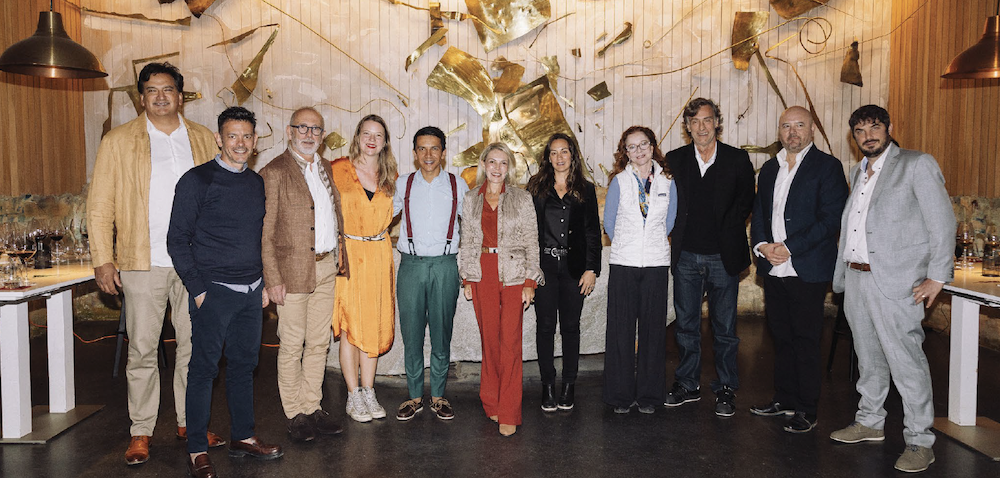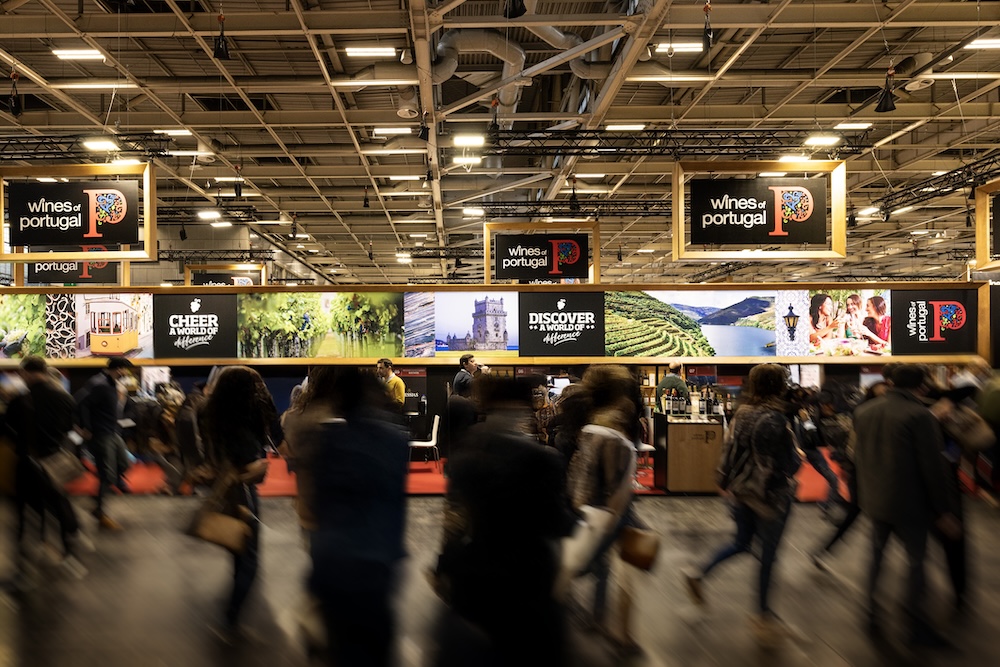
Discovery

Discovery
By Isabelle Escande - Photographs: courtesy of the estates / @GVA for ¡Hola! Cava, posted on 18 March 2024
Over the past few years, Cava has been dazzling consumers in the international marketplace, even managing to outshine Prosecco and Champagne. But this year, its producers have had to cope with extreme drought conditions causing an unprecedented decline in crop volumes which are threatening output and volume sales. This challenging situation has led the appellation’s bodegas to contemplate a range of strategies to help them overcome the shortfall, but also redefine their actions in the future.
The DO’s chairman, Javier Pagés, claims emphatically that this year’s cava harvest is “a warning for the future of winegrowing”. The situation is compounded by the fact that the two previous years were also affected by drought. Almost overnight, wineries have gone from a surplus of wines to managing a significant decrease in production, just as demand, particularly in export markets, heads North.
Also, the fact that Cava – unlike Cava Reserva and Cava Gran Reserva – can leave cellars after nine months’ ageing on the lees, does not necessarily help build up inventories, which is a prerequisite for absorbing shocks and compensating for production fluctuations. Once again, however, the Cava appellation’s bodegas have demonstrated their proactive mindset by introducing measures designed to respond to strong market pressure and cope with the current situation. Four of the top Cava companies tell us how they have managed to rise to the challenge.
If there is one thing that sets Raventós Codorníu apart – in addition to the experience it has gained over its 500-year history – it is its ability to adapt to new challenges. The magnitude of this year’s drought was extremely rare, but it did not take the company unawares, far from it. In fact, as Núria Vives, the global communications manager for the famous Catalan company explains, the lack of rainfall did not affect every area in the same way. It led to a production shortfall of 30 to 40% compared with 2022 in some wine regions, like Penedès, but at Raimat in the province of Lleida, where the bodega also farms its own vines, production was good mainly due to the lack of spring frosts.
Harvesting of the Chardonnay and Pinot noir grapes was slightly early but in Penedès, where Codorníu grows native grape varieties “which can cope with high temperatures well”, picking started on August 21, within the usual timeframe. Also, lack of rain promoted impeccable quality fruit. At Raimat (Costers del Segre), where the climate is more continental, “we achieved excellent balance between alcohol content and acidity, allowing us to compensate for the slight loss in acidity in the fruit from other areas that were more affected by the lack of water”.

Obviously, owning over 3,000 hectares of vines is an advantage when climate change has to be factored into the equation, but it is not enough. Good management is of paramount importance because, as Vives points out, within the appellation, Cavas cannot be produced from base wines stemming from different harvests. It is therefore impossible to compensate for lack of production one year by using inventories from previous years. “Our ‘reserve’ is based on our prediction ability. Depending on our forecasts for the harvest, we can increase our purchases of fruit from external producers at an early stage, which gives us great stability”. The winery’s exports, which account for approximately 45% of production, are thus not affected by the initial drop in volumes.
The company’s prediction skills are not just applied to short-term issues. It has introduced measures to adapt to the new conditions, primarily the lack of water, but also to reduce the carbon footprint of its business – in 2024, all of its Cavas will be organic. At Raimat, for example, precision farming methods are used, exemplified in the choice of regenerative viticulture, where ground cover limits soil erosion, and new mulching techniques. “Raimat is used as a strategic testing ground and its innovative techniques are gradually rolled out to the other companies within the group”. Raventós Codorníu is certainly setting a great example.

In the history of this benchmark Aragon winery, founded in 1867, harvesting had never been as early as this year. Picking occurred towards mid-August so as not to compromise the freshness of the fruit and acidity of the must, explains César Langa González. Along with his brother Juan, he represents the fifth generation to helm the family-owned company which has been based in the Calatayud region for over 150 years.

The winery farms 80 hectares of organically certified vines, divided between two areas where the geographical conditions are very different. It also has a block of very low-yielding, hundred-year-old vines which produce its top-notch wines. Unlike the high-volume rationale applied by some of the large groups, this particular bodega has always favoured quality over quantity. Although 2023 was a year of “climate challenges”, as Langa González points out, it also produced particularly healthy, good quality fruit due to lack of rainfall preventing the spread of diseases such as downy and powdery mildew. These conditions proved felicitous for crafting wines with unique character. “We will have wines in styles that we have never seen before. This is the very essence of winemaking, which is to try and transpose the true expressiveness of the site into the glass”.

Obviously drought also led to a fall in production – roughly 15% on last year – adds Langa González, “but fortunately rainfall in September slightly improved the situation”. The consequences will become tangible in the future – “we will have less Cava over the coming years” – but in some ways, this is “the natural law of our business”. In actual fact, despite being relatively small, the bodega has significant inventories of Guarda Superior Cavas, matured for over 18 months, one of which is its 2018 ‘Reyes de Aragon’ made from the 2018 harvest.
But how about the impact on prices? Some Cavas have increased their prices and done away with promotions to avoid any inventory shortages, points out Langa González. This new situation is also compounded by regulatory changes recently applied to the Cava appellation, leading to a repositioning of many Cavas in national and international markets. “Fortunately, our winery is in a good place and covers every segment, which means we can hope for significant value growth”, says Langa González. Volumes may be lower but there is no shortage of growth.

Harvesting promised to be challenging with output set to be over 50% down in some blocks, but ultimately the winery picked just 15% less than expected, which is a much lower drop than the rest of the industry, points out communications director Sílvia Rodríguez Rubio. “Vallformosa is located in a part of the region [Penedès] which coped slightly better with the drought. With the exception of some grape varieties, like Chardonnay and Pinot noir, which suffered a lot this year, the other cultivars adapted better to the extreme weather conditions. Ultimately, ripening went well”.

To tackle the drop in production, the winery had to buy more grapes from more growers – it partners with over 400 farmers. And to compensate for the losses, it was more than willing to increase its purchase prices to show solidarity with its partner growers. Also, adds Rodríguez Rubio, “We have now been providing farmers with solutions for adapting to climate change for the past three years”. Vallformosa has introduced “courses to educate growers about ways of pruning that are mindful of sap flows, which improves resistance to drought”, along with videos about vineyard management techniques that promote water retention, including deep tillage and winter cover crops, and avoid prolonged exposure to sunshine. The winery has always supported the use of native grape varieties, “rather than Merlot or the Cabernets, which are not well-suited to our climate”. It offers unwavering support for its grape growers because overcoming these issues is everyone’s responsibility.


As the founder of ¡Hola! Cava – the antithesis of a conventional winery – Christopher Heirwegh’s ethos revolves around innovating and adapting to emerging challenges. Before this year’s drought, comments the winemaker, “there was the economic crisis, the pandemic, the glass energy crisis… Through their innovative nature, our wines have successfully overcome many difficult situations and the company has always managed to reinvent itself”. This ability is at the core of the bodega’s success: “We’re not afraid of change, in fact we embrace it. For us, it is necessary, vital even for us to function because it forces us to bounce back and grow”.

This small family-run company, founded just ten years ago in Penedès, has constantly made headway throughout its short history. It is now a recognised Cava company, exporting its wines to over 35 countries. Right from the outset, it has made a point of being different. “When we entered the market, a decade ago, the wine industry in Spain, particularly for Cava, had a very firm rooting in tradition. We wanted to do things differently, to cast a fresh eye on the sector”. The company sought out new production methods within its home region in order to widen its scope for action.
One of its main innovations involves the production process itself for the sparkling wine –¡Hola! uses the Charmat method, that had never been used in the region before. In DO Cava, the traditional method – requiring secondary bottle fermentation – has established itself as an unwavering principle, but the young winery launched a premium Charmat five years ago. The wine is produced using lengthy 90-day fermentation and has proved to be a marketing success. “We were the first, but we definitely won’t be the last, in Spain, to opt for this production procedure”. One of its main advantages is that it preserves great fruit expression and underscores unique richness.

This dovetails with the company’s ultimate goal which is to showcase the region’s incredible terroir, “whilst providing different ways of interpreting the wine”. True to this ethos, ¡Hola! Cava has recently launched a low alcohol sparkling wine and a Cava-based spritz, offering the ultimate examples of how to reinvent a category.


Discovery

Discovery

Discovery